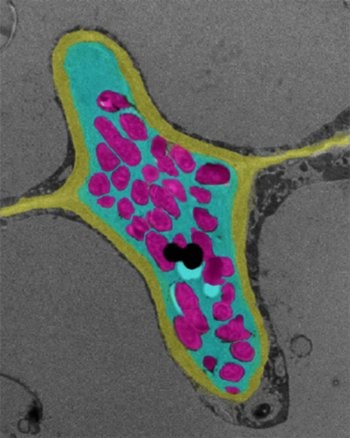Abstract
The root nodule symbiosis with its global impact on nitrogen fertilization of soils is characterized by an intracellular colonization of legume roots by rhizobia. Although the symbionts are initially taken up by morphologically adapted root hairs, rhizobia persistently progress within a membrane-confined infection thread through several root cortical and later nodular cell layers. Throughout this transcellular passaging, rhizobia have to repeatedly pass host plasma membranes and cell walls. Here, we investigated this essential process and describe the concerted action of one of the symbiosis-specific pectin methyl esterases (SyPME1) and the nodulation pectate lyase (NPL) at the infection thread and transcellular passage sites. Their coordinated function mediates spatially confined pectin alterations in the cell-cell interface that result in the establishment of an apoplastic compartment where bacteria are temporarily released into and taken up from the subjacent cell. This process allows successful intracellular progression of infection threads through the entire root cortical tissue.
Read full article
